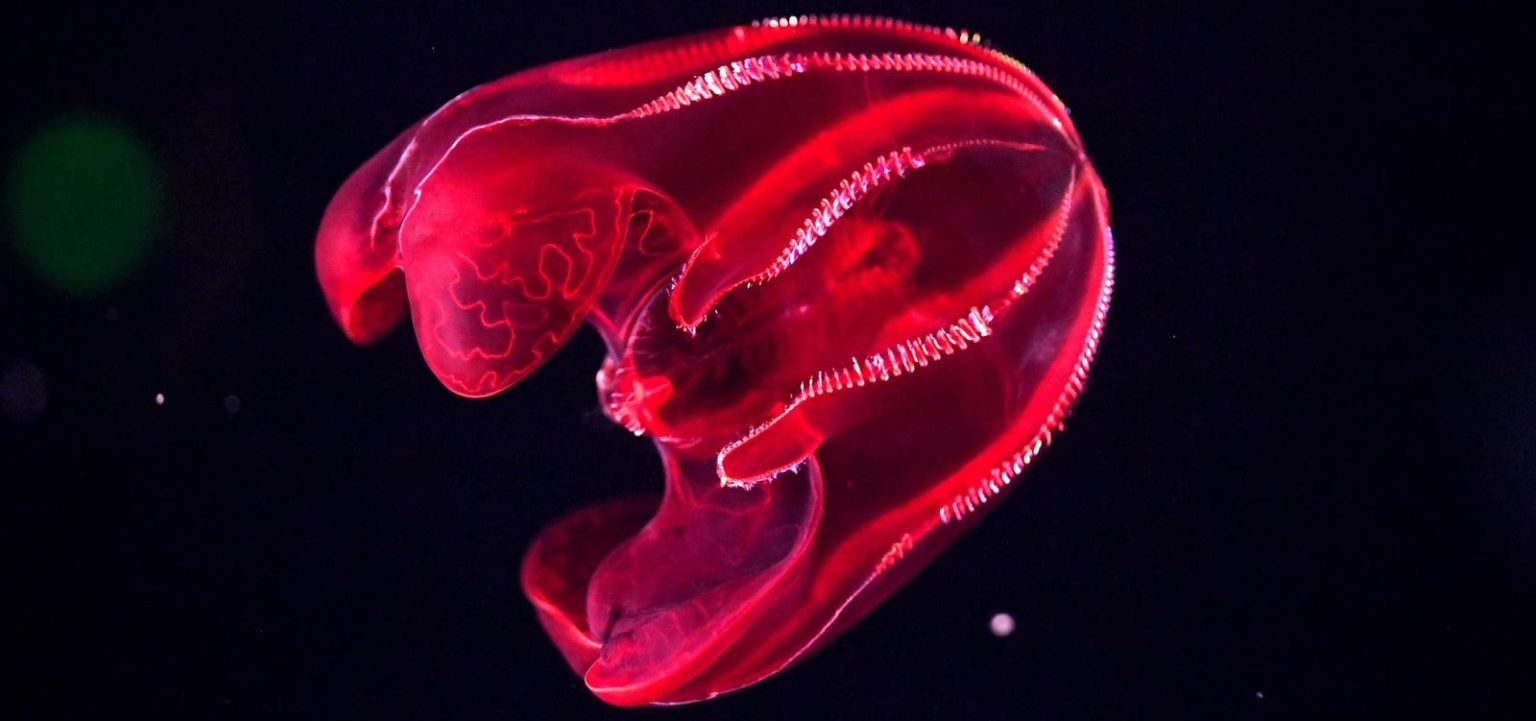In 1979, the DSRV Alvin discovered a mysterious creature in the depths of the ocean off the coast of Southern California. Initially mistaken for a jellyfish, this unique organism was later identified as the bloody-belly comb jelly or Lampocteis cruentiventer. Named for its bright iridescence and vivid red stomach, the bloody jelly was further studied from 1991 to 1999 at the Monterey Bay Aquarium Research Institute.
Unlike jellyfish, comb jellies like the bloody-belly do not have stinging cells. Instead, they rely on other adaptations to survive in their challenging habitat in the ocean’s twilight zone, between 820 to 4900 feet below sea level. One key survival strategy of the bloody jelly is its red camouflage, which helps it blend in with its surroundings where red light is scarce. This red coloration allows the jelly to remain undetected by both predators and prey.
Additionally, the rhythmic movement of the comb rows on the bloody-belly comb jelly’s body causes light to diffract, creating a stunning rainbow effect. This ciliary movement not only enhances the jelly’s visibility but also serves various purposes such as communication, attracting prey, or confusing predators. However, the presence of plastic pollution in the deep-sea habitats where comb jellies live poses a significant risk to these marine organisms.
Microplastics have been found in the digestive systems of comb jellies, indicating that our waste is infiltrating their environment. Given that these organisms may transfer microplastics to humans through the food chain, this issue requires urgent attention. As comb jellies like the bloody-belly occupy different levels of the marine ecosystem, they can accumulate microplastics that may then be passed on to larger predators, including fish consumed by humans.
Understanding the role of comb jellies in this cycle underscores the broader environmental impact of plastic pollution and emphasizes the need to address microplastic contamination in our oceans. By focusing on the preservation of these vital marine organisms, we can work towards sustaining the health of our oceans and safeguarding our own well-being. It is crucial to prioritize conservation efforts and reduce plastic waste to ensure the survival of creatures like the bloody-belly comb jelly and protect the delicate balance of the marine ecosystem.













